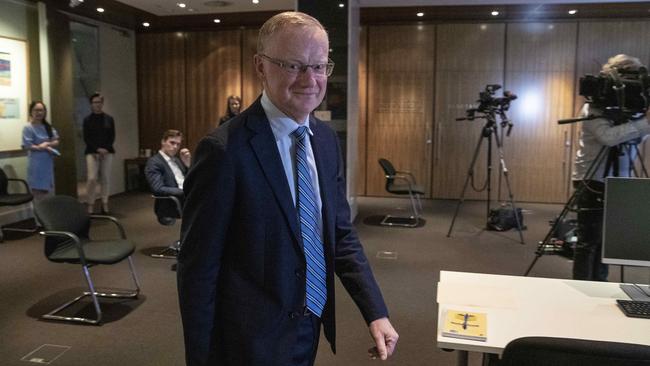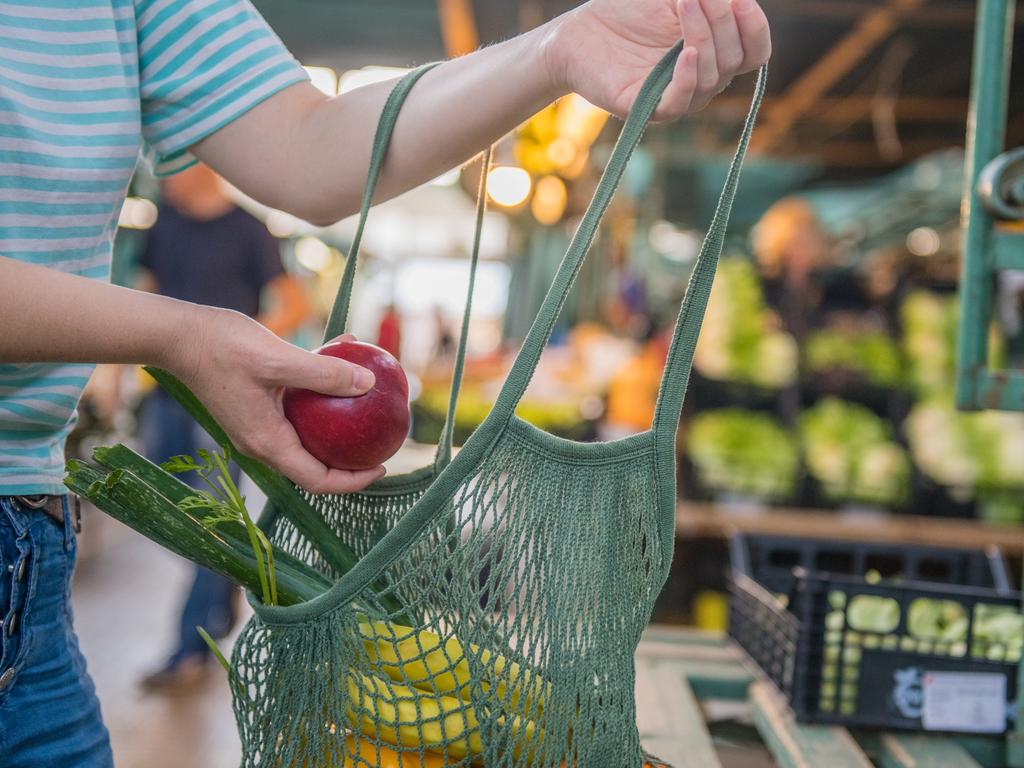We’re ready to do more, vows RBA’s Philip Lowe
The Reserve Bank has declared it can do even more to shield the economy from the worst effects of the pandemic.

The Reserve Bank has declared it can do even more to shield the economy from the worst effects of the pandemic, but negative interest rates remain “extraordinarily unlikely”, even as it cut rates to almost zero and unleashes a $100bn bond-buying program.
In a well-flagged move, the central bank threw everything at reviving the economy, including cutting its targets for interest rates including the overnight cash rate, three-year bonds and its term funding facility for banks to a record low of 0.1 per cent, from 0.25 per cent, and set a target of $100bn for its quantitative-easing program that will buy federal and state government bonds on the open market.
“We’ve been hit by the biggest economic shock in 100 years,” RBA governor Philip Lowe said in outlining the major policy response. “We need to recognise that the pandemic has inflicted significant damage on our economy.”
And while Australia has experienced a severe recession, Dr Lowe said it was not been as bad as was earlier expected or seen in many other countries.
Even so, the central bank put jobs as the goal of its rescue effort, warning that a sharp bounce-back in jobs was unlikely and it “will take time” to return to where Australia was before the pandemic.
In an unusual and lengthy press conference following the scheduled November board meeting, Dr Lowe indicated that the choice of the $100bn target for bond purchases was based on observations of other central banks where about 5 per cent of GDP — equivalent to $100bn in the Australian economy — has had a meaningful impact on markets.
In addition, the bank is prepared to purchase bonds in whatever quantity is required to achieve the three-year yield target, and these purchases will not form part of the bond-buying program.
The combination of the RBA’s bond purchases and lower interest rates across the yield curve was expected to assist the economic recovery by lowering financing costs for borrowers, contributing to a lower exchange rate than otherwise would have been the case, and supporting asset prices and balance sheets, while term funding for banks was contributing to low funding costs and supporting the supply of credit to the economy, Dr Lowe said.
After being dragged down by offshore markets recently, the S&P/ASX 200 index rose as much as 2.3 per cent on Tuesday, hitting a five-day high of 6090.8 before closing up 1.9 per cent at 6066.4.
But while the 10-year government bond yield hit a two-week low of 0.743 per cent, causing the gap to equivalent US Treasury bond yields to widen to the biggest negative differential since March, the dollar only dipped from US70.54c to US70.28c. It later bounced to US70.71c as the US dollar started to tumble amid expectations of a “clean sweep” by Democrats in the US election.
Dr Lowe noted that the Australian dollar had fallen in recent weeks in anticipation of the policy easing.
While the RBA cut its forecast peak for the unemployment rate to “a little below 8 per cent”, from 10 per cent previously expected, and predicts a return to growth in the December quarter, the economy was “not out of recession” and some way from regaining pre-pandemic levels, according to Dr Lowe.
An extended period of high unemployment and excess capacity is expected to keep wages and prices subdued over coming years. Unemployment is expected to be about 6 per cent by the end of 2022.
Significantly, Dr Lowe said that given the outlook for employment and inflation, monetary and fiscal support would be required for some time and the bank would not lift the cash rate until “actual inflation” — rather than forecast inflation — was sustainably within the 2-3 per cent target range.
For this to occur, wages growth would have to be materially higher than it was currently, which would require significant gains in employment and a return to a tight labour market, he added. “Given the outlook, the board is not expecting to increase the cash rate for at least three years,” he said.
“The board will keep the size of the bond purchase program under review, particularly in light of the evolving outlook for jobs and inflation. The board is prepared to do more if necessary.”
Westpac chief economist Bill Evans said the market had anticipated a bond purchase program of $100bn across all maturities.
By complementing that $100bn target with the open-ended plan to buy three-year bonds (whatever amounts are needed to keep the yield at 0.1 per cent), the RBA’s announcement “represents a more aggressive approach than expected”.
“While we respected market consensus, our preferred approach would have been to retain more flexibility so it is not surprising that this announcement has lowered bond rates,” Mr Evans said.
The market consensus now is for the bond purchase program and other measures to boost the RBA’s balance sheet increase from about $300bn now to $550bn, or 27.5 per cent of GDP, according to Mr Evans. “That growth will see the RBA increasing its balance sheet which was $180bn before COVID by a stunning 300 per cent,” he said.
In contrast the Federal Reserve has increased its balance sheet since COVID-19 from $3.8 trillion to $7.05 trillion, or 85 per cent, and it is now about 33 per cent of GDP.
“The RBA will be very rapidly closing in on the Fed from a standing start,” Mr Evans said.
Dr Lowe said the central bank would decide whether or not to extend its QE program depending on whether the bond market was still functioning properly and whether the outlook for unemployment and inflation was moving in the right direction.
Based on the RBA’s observations of what other central banks around the world have done, he said there was effectively no limit on how much QE the RBA could do as long as it was credible.







